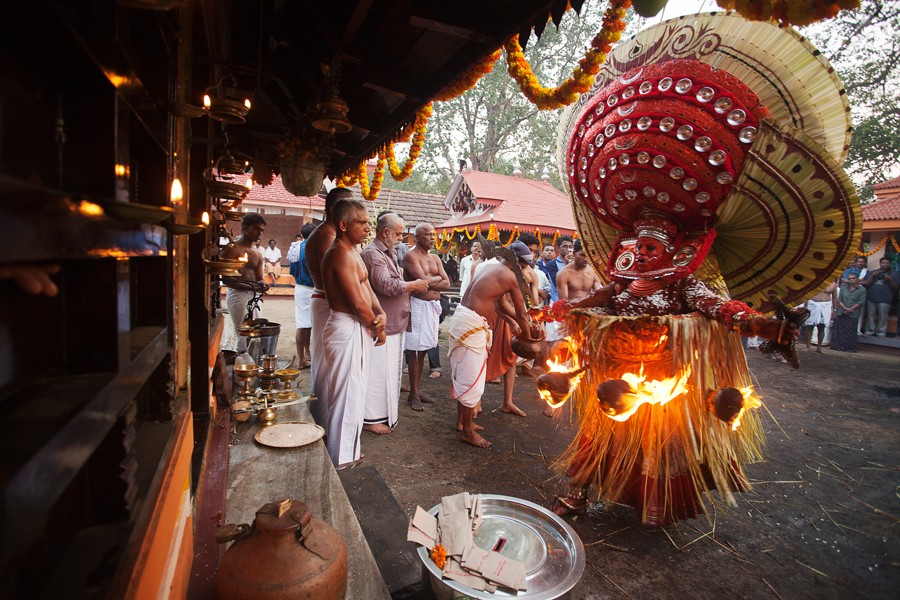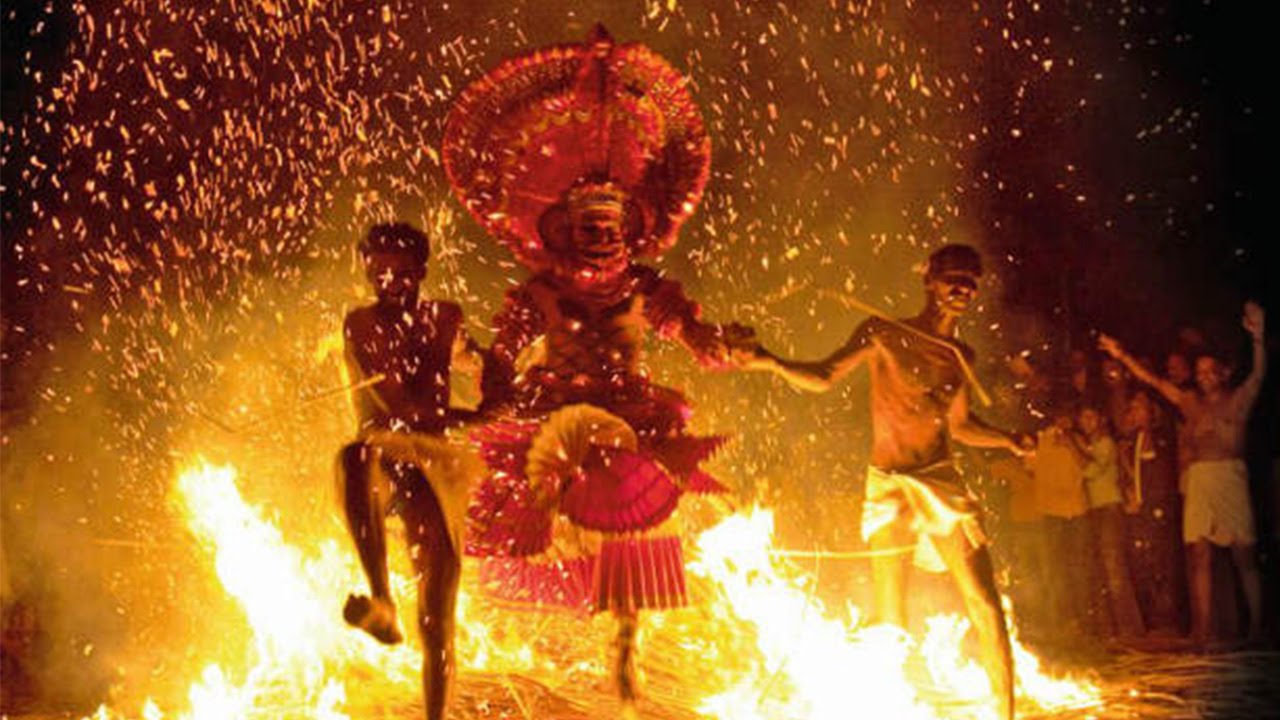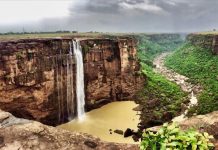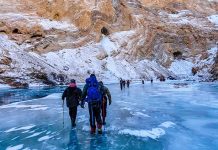Theyyam – A ritual art popular in north Kerala
Theyyam also known as Kaliyattam, it is a ritual dance popular in north Kerala or the erstwhile Kolathunadu. Theyyam incorporates dance, mime and music and enshrines the rudiments of ancient tribal cultures which attached great importance to the worship of heroes and the spirits of ancestors.
Of the over 400 Theyyams performed, the most spectacular ones are those of Raktha Chamundi, Kari Chamundi, Muchilottu Bhagavathi, Wayanadu Kulaven, Gulikan and Pottan. These are performed in front of shrines, sans stage or curtains, by persons belonging to the Vannan, Malayan and other related castes.
https://www.youtube.com/watch?v=ADkjqpqRgJ0
Karivalloor, Nileswaram, Kurumathoor, Cherukunnu, Ezhom and Kunnathoorpadi in north Malabar are places where Theyyams are performed annually from December to April. At the Parassinikadavu Sri Muthappan Temple in Kannur, Theyyam is preformed on all days.
Among the Indian festivals in winter, Theyyam Festival of Kerala runs from December to April making it the best time to visit India for cultural tourists and art photographers. The musical dance performance is ritualistically held at some 1200 temples from north Malabar to south Malabar. Each participant represents a heroic character with divine power. Performers wear heavy make-up, huge masks and flamboyant costumes for dramatic appearance and spectacular presence.
There are surprisingly as many as 400 forms of Theyyam; each being unique in style, music, choreography, make-up, costumes, etc. Pottan, Kari Chamundi, Gulikan, Vishnumurthy, Nagakanni, Veerali, Raktha Chamundi, Bhagavati, and Mutiappan are some of the most popular forms of Theyyam in Kerala. Face painting is what all these different forms of Theyyam have in common. Performers get their bodies painted with bright colors in varying designs and patterns from top to toe.
 In some forms of Theyyam, the costume is made of coconut leaves for the lower part of the body, while the upper part of the body remains bare and painted. In some other forms of Theyyam, performers smear the body with a paste of rice and turmeric. Headwear is the heaviest and largest part of the costume. Headdresses are made of different materials including bamboo sticks, wooden boards, peacock feathers, coconut leaves, and flowers.Such ornamental make-up and costumes help performers personify the grandeur of mythological figures including gods, goddesses, spirits and demons.
In some forms of Theyyam, the costume is made of coconut leaves for the lower part of the body, while the upper part of the body remains bare and painted. In some other forms of Theyyam, performers smear the body with a paste of rice and turmeric. Headwear is the heaviest and largest part of the costume. Headdresses are made of different materials including bamboo sticks, wooden boards, peacock feathers, coconut leaves, and flowers.Such ornamental make-up and costumes help performers personify the grandeur of mythological figures including gods, goddesses, spirits and demons.
What is the most offbeat about this Indian festival is that a few Theyyam forms require performers to wear bamboo crowns as high as 50–60 feet, which are supported by other people from behind. Either a piece of colorful cloth is used or coconut leaves are weaved together to cover the crowns. A silver replica of serpent embellished with red flowerers is seen around the necks of some performers. Those representing goddesses or female mythical figures wear wooden breasts adorned with ornaments and studded with gems.

As per the legends of Theyyam Festival, the people of north Malabar got the right to perform Theyyam from Parasurama, the sixth incarnation of Lord Rama. It is also believed that the mortal bodies of performers become one with immortal spirits and mythical figures to perform ritual dances and caste a trance over onlookers. The performance ends with distribution of turmeric powder as a token of blessing to the devotees. In return of the blessing, they sprinkle rice grains over them performers. Some performances held in temple premises and courtyards continue to enchant the audience for hours.

Evidently, the season of Theyyam Festival from December to April is the best season of Kerala Tourism for cultural enthusiasts on a visit to Incredible India.



















